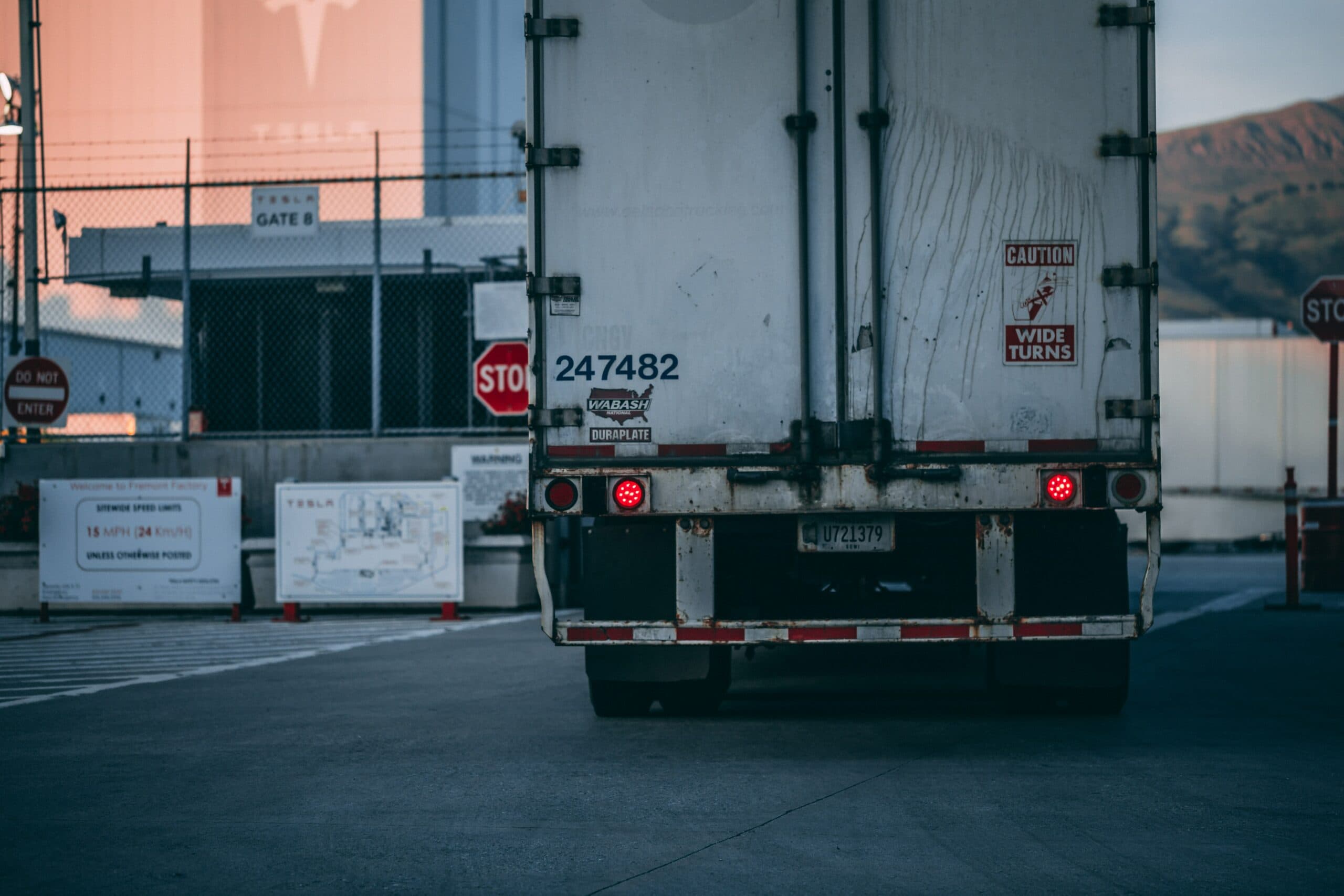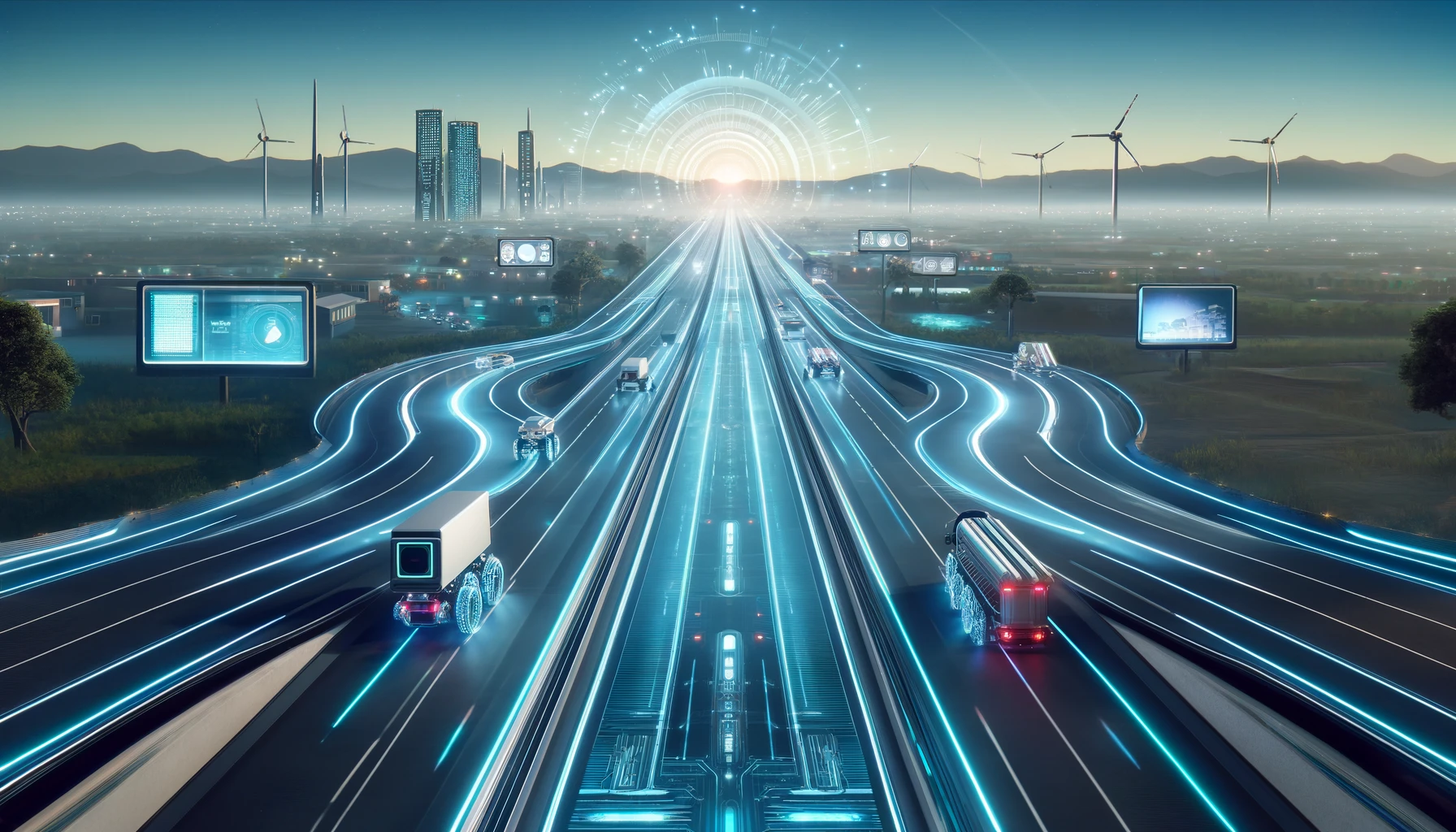How to drive an 18 wheeler is a skill that might seem intimidating at first. While there’s definitely a learning curve, it’s something that anybody can master with enough practice. Driving an 18 wheelers can be a great way to earn a living, so let’s dive in.
How To Drive An 18 Wheeler
Driving an 18 wheeler is a job that offers good pay, a lot of flexibility, and far more freedom than most careers. For those reasons it’s a very popular field, and a lot of people want to learn. First, you need to know a bit about an truck trailer. To drive an 18 wheelers, you need a specific set of skills, knowledge, and qualifications, such as training in defensive driving techniques, basic vehicle maintenance, and the ability to follow U.S. DOT safety regulations. Professional truck drivers must also have knowledge of how to thoroughly check their vehicles before taking off and know the right routes to take for their deliveries. Becoming a safe and professional 18 wheelers driver requires comprehensive training, lots of practice, and dedication to staying current with changing policies and regulations.
Learn The Differences
Driving an 18-wheeler isn’t quite the same as driving your car. Because you might be towing as much as 40,000 pounds of cargo, it’s going to take you a lot longer to get up to highway speeds, and it’s going to take you longer to slow down. In fact, you need 40-50% more space for braking.
In other words, you’re going to have to relearn some of your basic driving reflexes. You have to hit the brakes sooner when approaching a red light or a stop sign. You need a lot more space to turn, which will be one of the most difficult adjustments to make.
Your eighteen wheeler is going to be about 13.5 feet tall and 70 feet long, assuming you aren’t hauling an oversized load. Just the fact that you’ll be sitting so much higher off the ground is going to change the way you drive, because your field of vision will be different.
One big difference many people aren’t aware of is that the engine on 18 wheelers usually has a device built into it that limits its top speed. In most of them that limit is set between 62 and 68 miles per hour. This is both a safety feature- an 18-wheeler at 80 miles per hour can cause a lot of damage with just a simple mistake- and a cost saving measure.

The Engine
Learning how to drive an 18 wheeler means learning about the engine. While it’s similar in principle to your car engine, that’s a lot like saying a campfire is similar in principle to a furnace. Yes, they do the same thing, and even work in the same basic way, but there’s a huge difference between them.
The engine on your big rig is a massive diesel engine. Your car’s engine has a displacement of 3-5 liters, produces 150-250 horsepower, and 200-300 foot pounds of torque. A trailer truck engine displaces 12-15 litres, produces 4-500 horsepower and 1200-2000 foot pounds of torque.
These enormous engines are built to last, and they usually make it well over the 1 million mile mark. Your semitrailer probably holds about 300 gallons of diesel fuel and can travel 1500 miles on a full tank. Before checking out the engine, you may want to know how much a semi truck hood weighs.
The Transmission on an 18 Wheeler
You’re probably used to driving a car with an automatic transmission. They’ve been more popular than standard transmissions for a long time now, and most manufacturers aren’t making cars with standard transmissions anymore.
Even if you know how to drive a car with a standard transmission, you’re used to 5 forward gears. A typical trailer truck has 10 forward gears, and most owner-operators or heavy haulers use between 13 and 18 forward gears.
Hauling heavy loads, especially over mountainous terrain, requires all those extra gears. Learning to use them can take some time. Fortunately, if you already know how to drive with a standard transmission, the learning curve is fairly small.

Learn How To Drive An 18 wheelers
As you can see from all the differences between your car and an 18 wheeler, driving an 18 wheelers is a very different experience than driving a car. That’s why it actually requires a different drivers license.
Back To School
Before you can get you’re trucking license, you’re going to have to go back to school. You’ll need to enroll in a training program to learn how to drive a trailer truck. That may not be what you want to hear, but it’s really necessary. Trucking school will give you a chance to learn how to drive an 18 wheelers by actually driving one.
That way by the time you’re actually one the road, alone, hauling a truckload across the country, you’ll actually have experience behind the wheel of a trailer truck. You’ll get a lot of practice with things like turning, braking, and shifting gears. You’ll also learn how to perform some basic maintenance in case you run into engine trouble on the road.
Your local DMV should be able to provide you with a list of Commercial Drivers License schools in your area. Make sure that you pick one that’s been approved by Professional Truck Driver Institute. Expect to complete about 350 hours of training, and spend a few thousand dollars on tuition, books, and licensing fees.
It sounds like a lot, but when you consider the dangers involved in driving an eighteen wheeler, it’s very reasonable. You want to be certain that you’re fully prepared before you get behind the wheel of an 18 wheelers alone for the first time.
What You’ll Learn About How To Drive An 18 wheelers
You’ll learn things like how to properly shift lanes in a big rig, how to turn, and how to brake. In other words, you’ll relearn some basic driving skills that are very different with 18 wheelers than with cars.
You’ll also learn some things that aren’t directly related to operating the vehicle. That includes government regulations that apply to 18 wheelers, keeping a logbook of your hours, and how to transport hazardous materials.
Driving an truck trailer involves a lot more than just learning to operate the vehicle, and a good CDL school should cover all of these things.

Driving an 18 Wheeler
While you should absolutely turn to a CDL school to learn how to drive a semi-truck, we can still provide some basic information here. That way you’ll have a decent idea of what to expect, and perhaps some idea of whether or not this is really for you.
Plus, it might help put your mind at ease the first time you get behind the wheel. It won’t look much like your car- the dashboard will be covered with all kinds of dials and gauges. That’s because this are designed to let you monitor every aspect of its operation.
How To Start
Many beginners are shocked by the process of starting the engine. It’s not as simple as turning the key and driving off. First you need to depress the clutch, and make sure the transmission is in neutral. Then you can start the engine, and slowly release the clutch.
Always go slow when you release the clutch. If somehow the transmission is not in neutral, releasing the clutch will cause the truck to move and that could cause a very expensive accident. So, always release slowly.
Once you’ve released the clutch, you need to make sure the semitrailer is ready to drive. Start by checking the oil gauge to make sure there’s enough oil pressure. Then check to make sure there are no warning lights or buzzers indicating a problem with the engine.
Now you’ll need to let the engine idle for about 10 minutes to warm up. Trying to drive before you’ve let the engine warm up will cause more wear and tear on the engine, and will increase your maintenance costs significantly.

Before You Drive Off
Once the engine is running and you’ve made sure there are no problems, there are still some things you need to do before you’re ready to drive your 18 wheeler. Start in the bunk area. Make sure everything there is secured, so that nothing goes flying forward when you hit the brakes.
You should also make sure that all the walking areas in the cab and bunk area are free of clutter. Now you need to check for air leaks. Check your pressure gauge to be sure it’s at 120, and then engage the air to the trailer. If it drops below 100, you need to address that problem immediately.
Get Rolling
You should never drive an semi trailers by just hitting the gas and driving off. Always back up a few feet, to ensure all the trailer wheels are rolling. Then roll forward a few feet and engage to the trailer break, to ensure that it’s working.
Check all your gauges again to make sure everything is in working order. Then, turn on your CB radio, put the truck in 1st or 2nd gear, and you’re ready to go.
Difference between 18 wheeler and other truck.
Typically 18 wheeler is known as semi-trucks, tractor-trailers, or big rigs trucks. They are large commercial vehicles used for transporting goods across long distances.
18 wheeler
An “18 wheeler” typically refers to a tractor-trailer combination consisting of an articulated truck with a single engine and a trailer with 18 wheels. These vehicles are commonly used for long-haul freight and goods transport over long distances on highways and interstates.
Semi truck
A “semi truck” is a more general term that can refer to any truck with a tractor unit pulling a trailer, whether or not it has 18 wheels. The term “semi” is derived from the fact that the tractor unit only partially supports the trailer and requires additional support from its wheels.
Big rig truck
Big rigs are composed of two main parts: the tractor and the trailer. The tractor, the front part of the vehicle, has a powerful engine, a cab for the driver, and a fifth-wheel coupling connecting to the trailer. The trailer, which is the rear part of the vehicle, is designed to carry a variety of cargo, such as shipping containers, vehicles, livestock, or dry goods.

How To Shift Gears On An 18 Wheeler
Once you’re underway, you’ve got to start dealing with one of the trickiest parts of how to drive an big rig. Shifting gears is a necessary part of driving an 18 wheeler tires, but it’s usually intimidating for new drivers. It’s not just learning to actually shift gears, it’s learning when, and why.
How To Shift
If you’ve driven with a standard transmission before, this process will be familiar. Start by engaging the clutch, and shifting into neutral. Always use your left foot to engage the clutch, so your right foot is free to operate the brakes and the accelerator.
Remember to always put the large trucks into neutral before starting the engine. 1st gear is for situations where you need a lot of traction, not starting or idling the engine.
Place the truck in gear- 2nd gear, if you’ve just started the engine- and then slowly engage the accelerator while slowly disengaging the clutch. If you’ve never driven a standard before, it’s going to take you some time before you can do this well.
You may stall the engine a few times, and you’re definitely going to rev the engine up a lot while you wait for the clutch to engage. It’s all about timing the release of the clutch and the engagement of the accelerator so that the transmission engages smoothly. That’s something you can only do with practice, so don’t worry if your shifts are jerky and rough while you’re just starting out.
Listen to the Engine
Learning when to shift gears is just as important as learning how. Higher gears are used at higher speeds, and lower gears for lower speeds. We’ll get into more details on that later, but for now we’ll focus on how you’ll know when to shift.
By far the easiest way to know its time to shift to a higher gear is to listen to the engine. When it’s time to shift, the pitch of the engine is going to get much louder, and you’ll know it’s time to go up a gear.
You can also watch the RPM gauge on your dash. Just glance at it when the pitch starts to get loud. When the RPM goes over 5000, it’s time to shift.
Shifting gears while driving follows the exact same procedure we’ve already described, except you do need to do it fairly quickly since the truck is already in motion and you want to maintain your acceleration. Again, when you’re new at this, each gear shift is going to be jerky and rough. With practice you’ll be able to shift smoothly and quickly.
By contrast, when you need to downshift to a lower gear, the engine pitch will get lower, and your RPM gauge will be dropping. If you wait too long to downshift you’ll also feel the truck trailer beginning to shake. The shaking will stop as soon as you engage the clutch, but if you wait to long to downshift the engine will stall.
When To Use Lower Gears
One key to learning how to drive an large trucks is learning what the different gears are for. Lower gears are for lower speeds, but there are also situations when you really need those lower gears. These gears are specifically for when you need more traction or more torque.
Mountainous or hilly terrain is the most common and obvious situation for lower gears. When you’re hauling 40,000 pounds of freight up an incline you really need the extra torque of the lower gears to pull your rig along.
Wet, snowy, or icy conditions also call for low gears. This is partly because you should be driving your trailer truck more slowly in these conditions, and partly because you’ll get better traction on slippery roads when driving in low gears. In fact, these kinds of conditions are really the only time you should drive an 18 wheeler in 1st gear.
When To Use Higher Gears
Higher gears are used when torque and traction are less important. Basically, the higher gears are for cruising on highways and roads. You’ll use them in favorable driving conditions, on flat roads, and in nice weather.
Most of your time cruising on the interstates will be in your truck’s highest gear. Once you get up to cruising speed you won’t have to shift again until you slow down. That means there are some stretches of highway where you won’t need to downshift until the day is over and you’re pulling over to get some sleep.
The Lever On Your Gear Shift
One tricky part of how to drive a semitrailer is that there are at least five more gears than on a standard car. Instead of adding five more positions to move the shifter into, there’s a lever on the side of the shifter.
You flip that lever into the high position for the higher gears (6-10). And then down into the low position for the lower gears (1-5). While this is a big difference from typical cars, it’s one that actually doesn’t take much time to master.
That’s because you’ll only use it when shift from 5th to 6th gear, and then back down from 6th to 5th. So, with the clutch engaged, you’ll pull the shifter into neutral, flip the lever, and then shift back into gear. Easy.
Conclusion
As you can see, how to drive an 18 wheeler is something that definitely requires a lot of practice and training. It’s not that it’s hard to learn. It’s just that you need to have certain skills down pat before you get behind the wheel of a big rig on the highway.
The combined weight of the truck, trailer, and cargo can be up to 80,000 pounds. That means that a simple mistake that would be harmless in a car could be devastating in a semitrailer. So, you want to make sure you’re fully prepared. Knowing how to drive a semi-truck is a valuable skill, and it’s one that anybody can learn.
About Booker Transportation
Booker Trans is 100% Owner Operator. It is our belief that an Independent Owner is the best way to get a customers freight delivered timely and safely. Booker is a leading Refrigerated Carrier providing the best lease options in the industry for today’s Owner Operators. Monthly and Yearly Awards, Longevity Bonuses, and the Free tires for Life of Lease Program, are just a few examples of what Booker Trans offers the Owner Operator. Booker Trans has built it’s success upon working partnerships with Customers, as well as Agency Relationships built over the last 20 years. Those same relationships are what makes consistent year round freight possible.
Are you interested in becoming an owner operator driver or getting into the logistics industry?
Let’s connect!
Navigating the Highways of Change
04/18/2024

Owner Operators should be prepared for Cellular Service outages!
03/06/2024

